A little history
Despite its already long and prestigious history, Pierce-Arrow was in trouble by the early Thirties. In 1928, Studebaker had taken a controlling interest of the firm – it had then seemed a clever move, Pierce-Arrow receiving the financial support of a large and ambitious corporation, while retaining most of its autonomy. Shortly thereafter Wall Street crashed, and automobile companies, all the more those producing luxury cars, suddenly faced a bleak future. Studebaker’s sales plummeted and its finances faltered as, despite a dwindling income, its management proved unable to reduce costs, even continuing to pay generous dividends to its stockholders.
That’s in these dire circumstances that Pierce-Arrow welcomed a new sales manager, Roy Faulkner. With solid credentials earned at Auburn, Faulkner was the man for the job. One of his first decisions was to restore Pierce-Arrow’s image by presenting the car everyone would talk about: the Silver Arrow. Designing this ground-breaking automobile didn’t take more than three months to the team led by James Hughes and Phil Wright, the latter penning the extraordinary body. Though not yet of “pontoon” type, it swallowed the wings almost completely. Running boards were absent, while the rear took the shape of a radical “beaver tail” as it was sometimes called back then, or rather fastback as we would say nowadays. Wind tunnels were used to perfect the sleekness of this very aerodynamic car. Engine was a specially-developed V12, which cylinders opened at a wide angle, in order to reduce the block’s height and, consequently, lower the bonnet. With 175 bhp, the Silver Arrow was advertised for 185 kph, which was perhaps no more than wishful thinking considering the hefty weight of the car, but performances were excellent nonetheless.
The Silver Arrow was ready on time for the New York Auto Show, in January 1933. Later, it was sent to the Chicago Fair, a well-publicized international event which roaring slogan “a century of progress” sharply contrasted with the hardship most people encountered at the time. Dozens of world records set by specialist Ab Jenkins at Bonneville also helped turning the spotlights onto the Silver Arrow.
The Silver Arrow certainly looked like nothing else on the road in 1933, but the motoring landscape wasn’t transformed much by its introduction, though. With a price tag of $10,000, production had to be limited – five copies were ultimately built. Indeed, was it intended for anything else than publicity, as a glance of the future made readily available to a fortunate few?
Nineteen thirty-three was a rather good year for Pierce-Arrow. Helped by the exposure brought by the Silver Arrow, but even more by a modest recovery of the economy, sales went up again. Almost 2,300 Pierce-Arrows of all models were sold during the year, a result that could have been even better without the disruptions brought by damaging strikes at some of its subcontractors’ plants. The situation wasn’t as rosy at Studebaker: by February, the company declared bankruptcy and, less than five months later, the company’s president A.R. Erskine, whose management was under fire, cocked the gun with which he was about to take his own life.
Placed into receivership, Studebaker was forced to sell Pierce-Arrow to a group of Buffalo financiers. Not only all of the company’s debts were cancelled, but fresh cash was injected into its coffers. Its new owners had great plans for their acquisition. Unfortunately result wasn’t up to their expectations, Pierce-Arrow failing to develop the smaller car that would have guaranteed it larger production volumes, as Packard did with its 120 model. Consequently, the company closed for good in 1938, its last assets being sold at auctions.
About the model
Model: Pierce-Arrow Silver Arrow
Year: 1933
Maker: Ixo
Scale: 1/43
Distributed by: Altaya as no.31 of its Voitures Classiques press series
Acquired: brand new, in April 2007, in Souillac, France
An extremely good reproduction of the Silver Arrow was made in 1/43 by Ixo. My rating would go as high as 15/20.

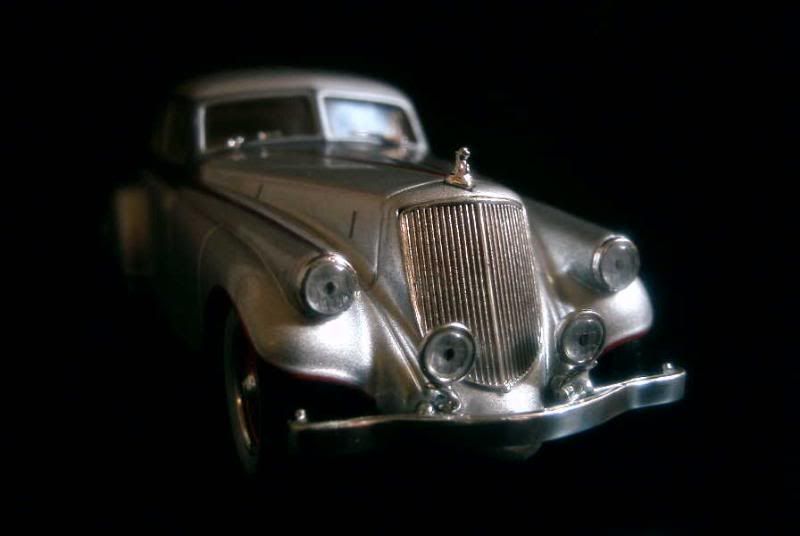

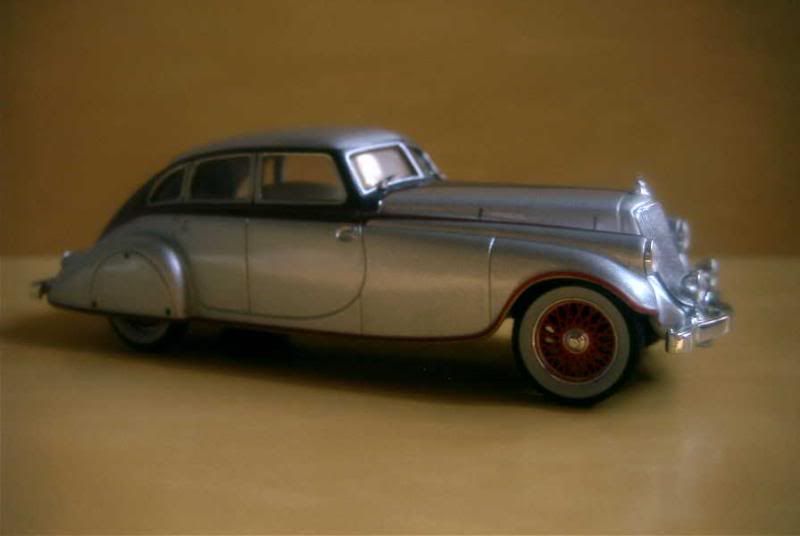
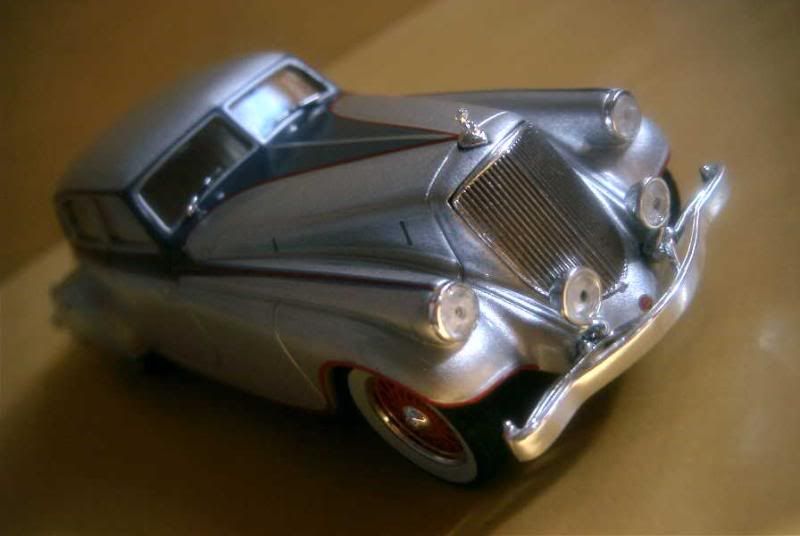
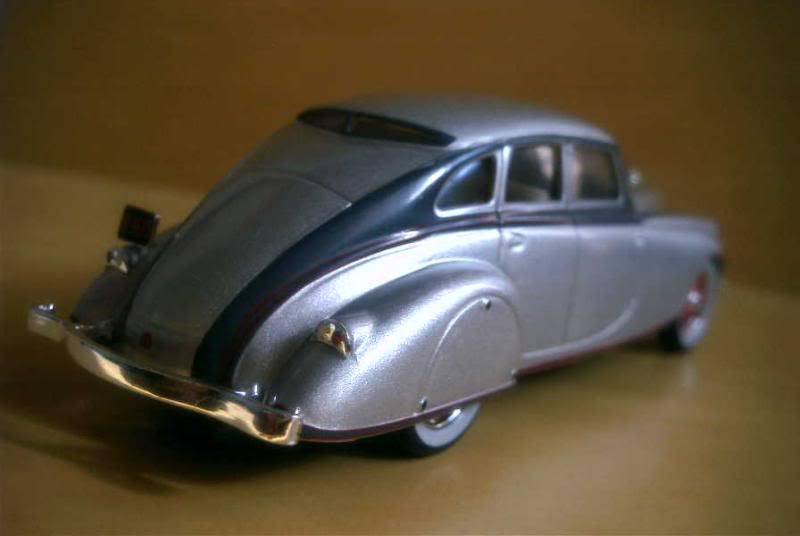
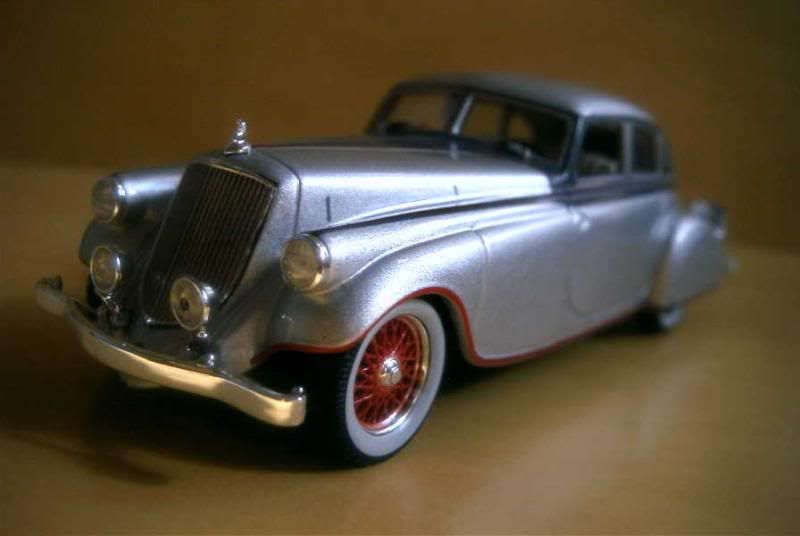
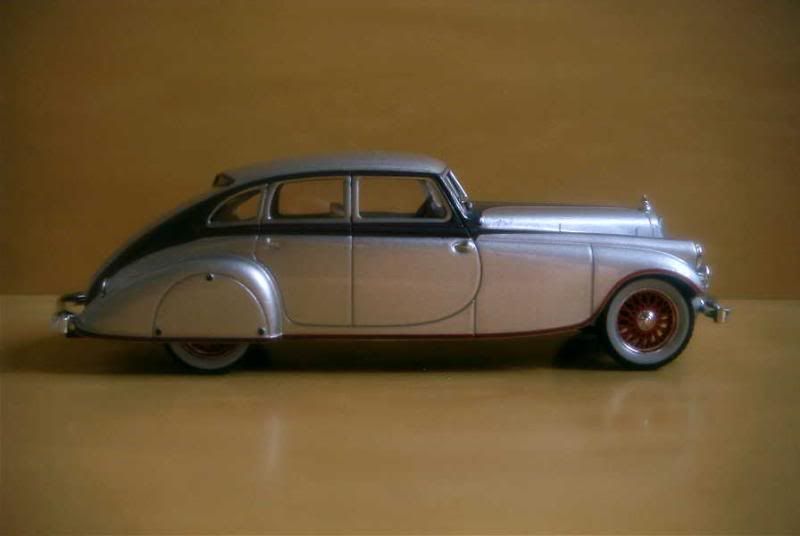
Despite its already long and prestigious history, Pierce-Arrow was in trouble by the early Thirties. In 1928, Studebaker had taken a controlling interest of the firm – it had then seemed a clever move, Pierce-Arrow receiving the financial support of a large and ambitious corporation, while retaining most of its autonomy. Shortly thereafter Wall Street crashed, and automobile companies, all the more those producing luxury cars, suddenly faced a bleak future. Studebaker’s sales plummeted and its finances faltered as, despite a dwindling income, its management proved unable to reduce costs, even continuing to pay generous dividends to its stockholders.
That’s in these dire circumstances that Pierce-Arrow welcomed a new sales manager, Roy Faulkner. With solid credentials earned at Auburn, Faulkner was the man for the job. One of his first decisions was to restore Pierce-Arrow’s image by presenting the car everyone would talk about: the Silver Arrow. Designing this ground-breaking automobile didn’t take more than three months to the team led by James Hughes and Phil Wright, the latter penning the extraordinary body. Though not yet of “pontoon” type, it swallowed the wings almost completely. Running boards were absent, while the rear took the shape of a radical “beaver tail” as it was sometimes called back then, or rather fastback as we would say nowadays. Wind tunnels were used to perfect the sleekness of this very aerodynamic car. Engine was a specially-developed V12, which cylinders opened at a wide angle, in order to reduce the block’s height and, consequently, lower the bonnet. With 175 bhp, the Silver Arrow was advertised for 185 kph, which was perhaps no more than wishful thinking considering the hefty weight of the car, but performances were excellent nonetheless.
The Silver Arrow was ready on time for the New York Auto Show, in January 1933. Later, it was sent to the Chicago Fair, a well-publicized international event which roaring slogan “a century of progress” sharply contrasted with the hardship most people encountered at the time. Dozens of world records set by specialist Ab Jenkins at Bonneville also helped turning the spotlights onto the Silver Arrow.
The Silver Arrow certainly looked like nothing else on the road in 1933, but the motoring landscape wasn’t transformed much by its introduction, though. With a price tag of $10,000, production had to be limited – five copies were ultimately built. Indeed, was it intended for anything else than publicity, as a glance of the future made readily available to a fortunate few?
Nineteen thirty-three was a rather good year for Pierce-Arrow. Helped by the exposure brought by the Silver Arrow, but even more by a modest recovery of the economy, sales went up again. Almost 2,300 Pierce-Arrows of all models were sold during the year, a result that could have been even better without the disruptions brought by damaging strikes at some of its subcontractors’ plants. The situation wasn’t as rosy at Studebaker: by February, the company declared bankruptcy and, less than five months later, the company’s president A.R. Erskine, whose management was under fire, cocked the gun with which he was about to take his own life.
Placed into receivership, Studebaker was forced to sell Pierce-Arrow to a group of Buffalo financiers. Not only all of the company’s debts were cancelled, but fresh cash was injected into its coffers. Its new owners had great plans for their acquisition. Unfortunately result wasn’t up to their expectations, Pierce-Arrow failing to develop the smaller car that would have guaranteed it larger production volumes, as Packard did with its 120 model. Consequently, the company closed for good in 1938, its last assets being sold at auctions.
About the model
Model: Pierce-Arrow Silver Arrow
Year: 1933
Maker: Ixo
Scale: 1/43
Distributed by: Altaya as no.31 of its Voitures Classiques press series
Acquired: brand new, in April 2007, in Souillac, France
An extremely good reproduction of the Silver Arrow was made in 1/43 by Ixo. My rating would go as high as 15/20.











No comments:
Post a Comment